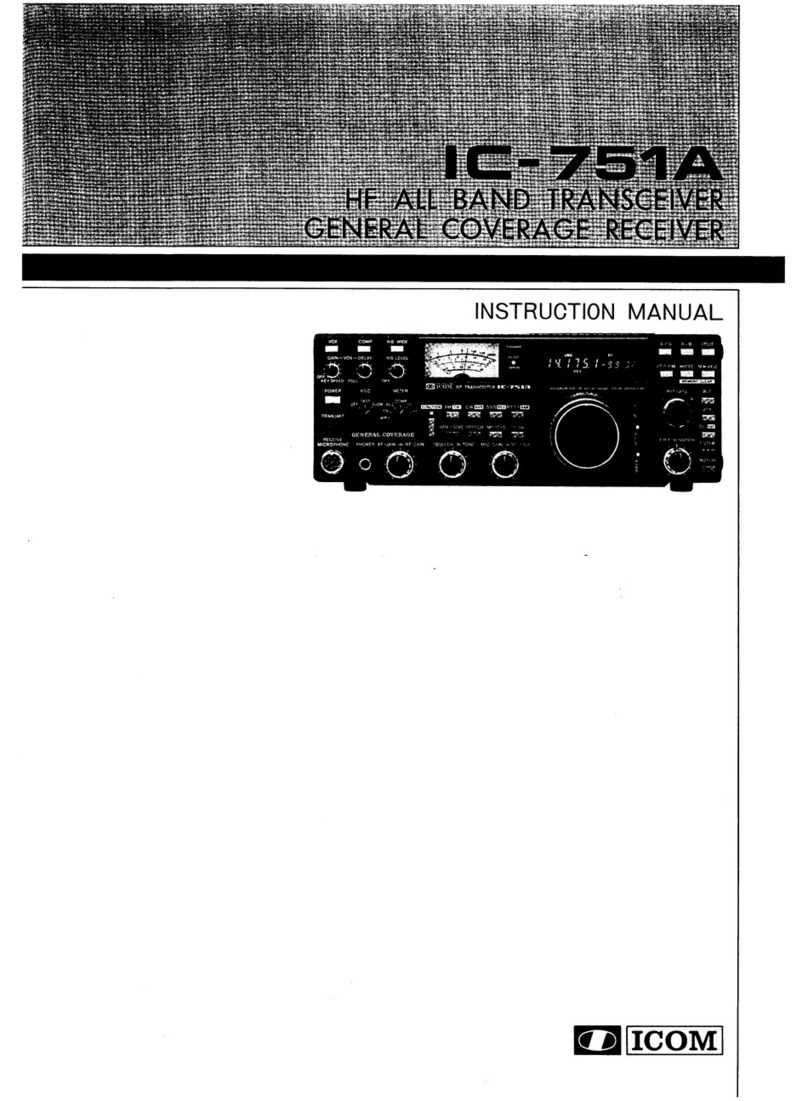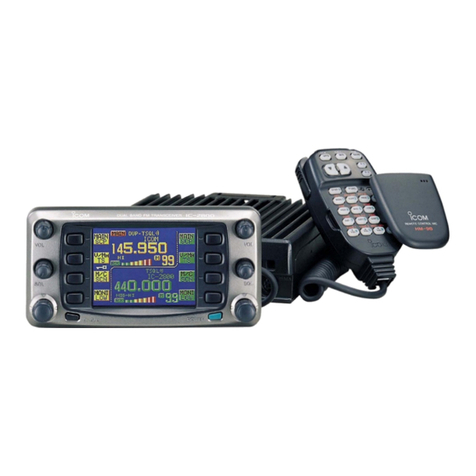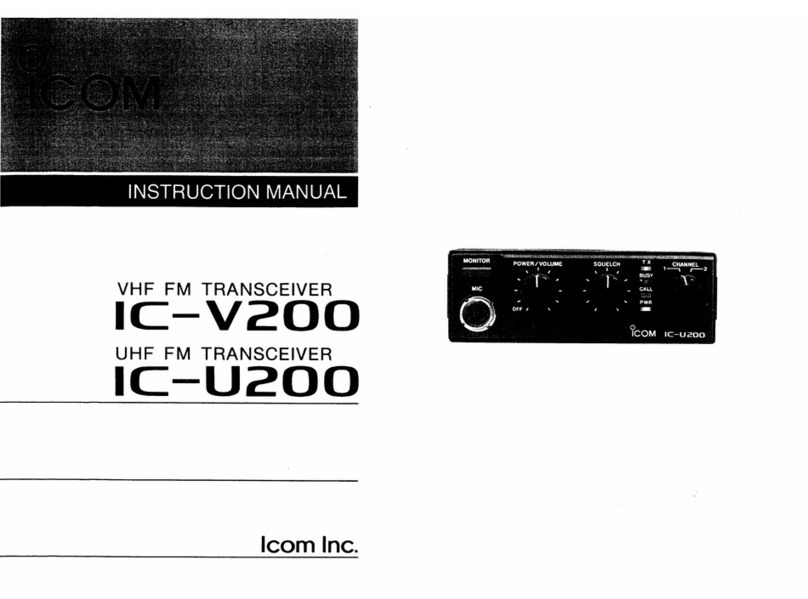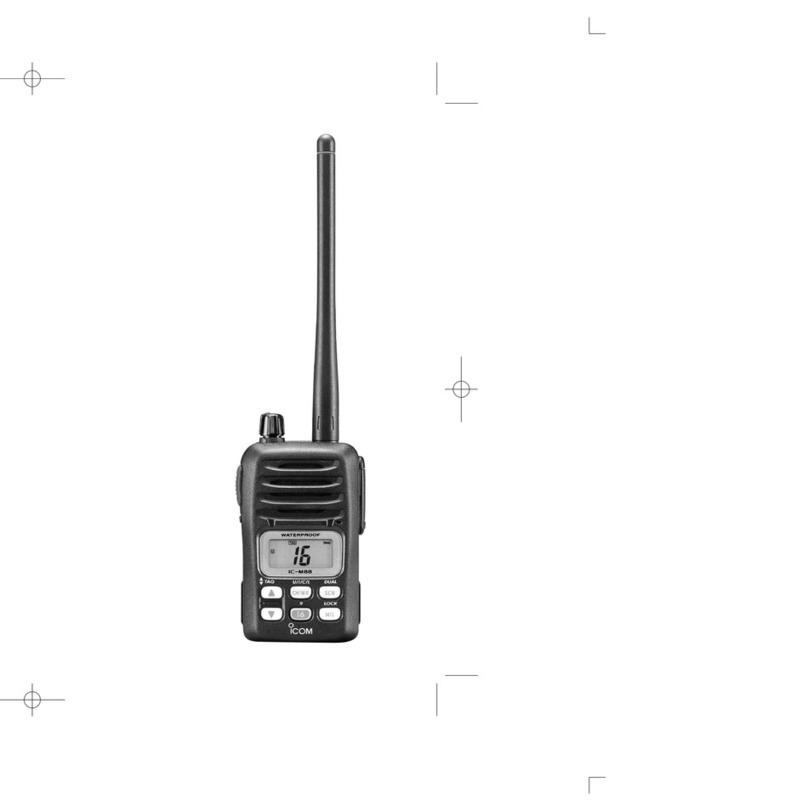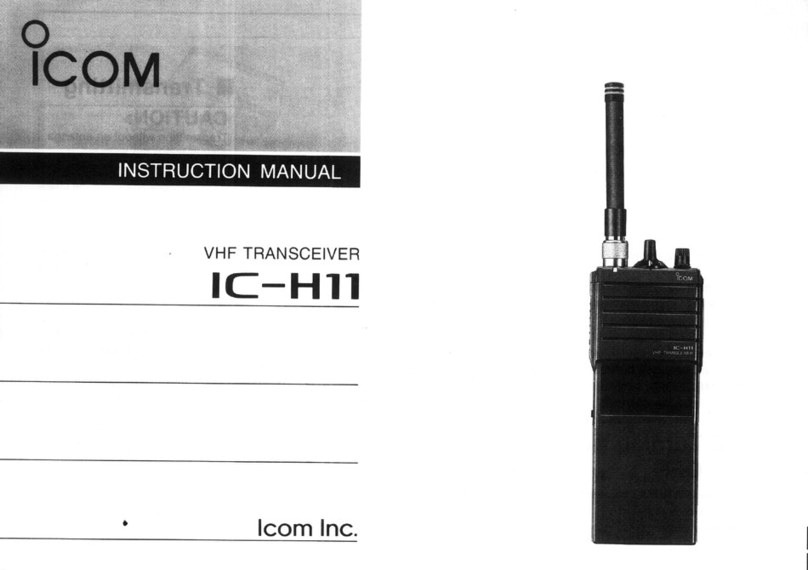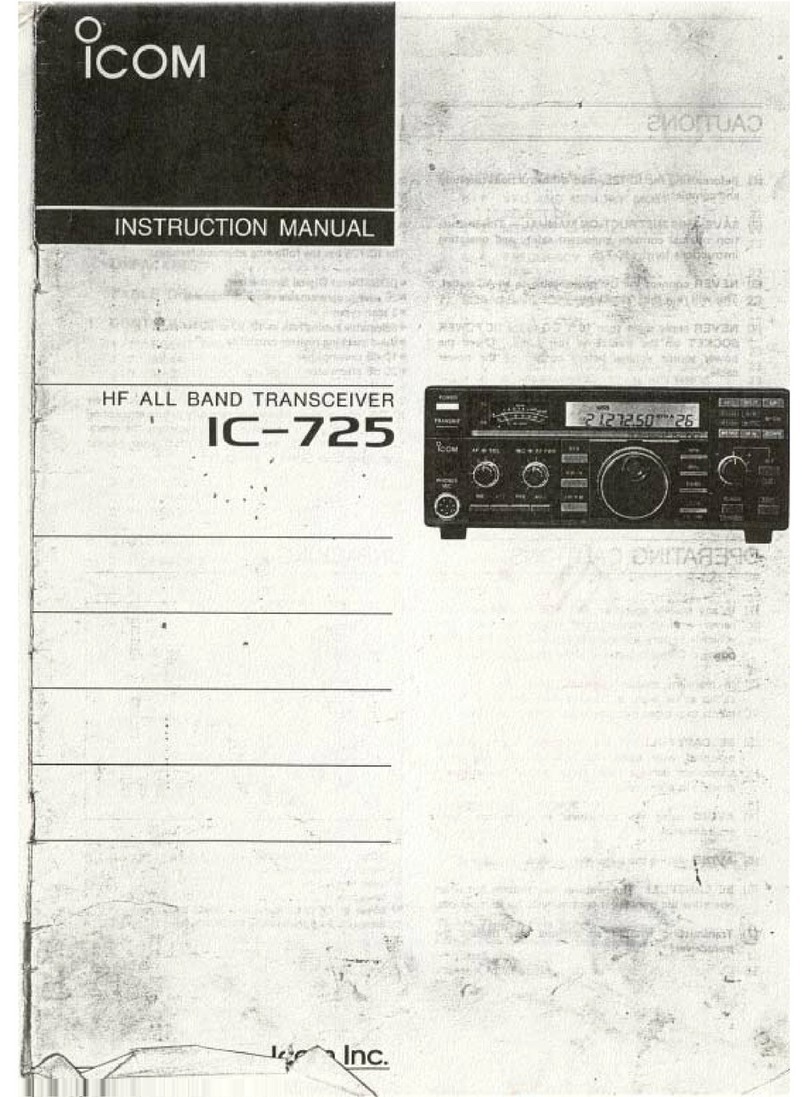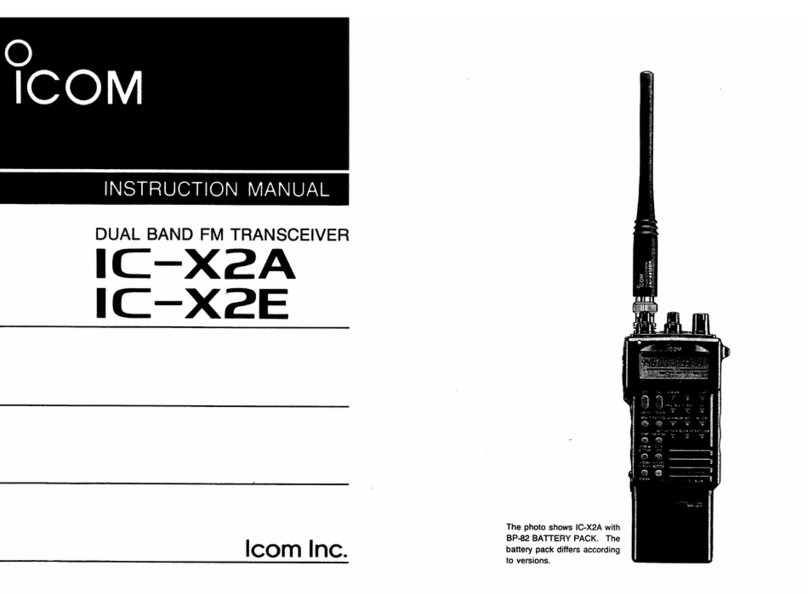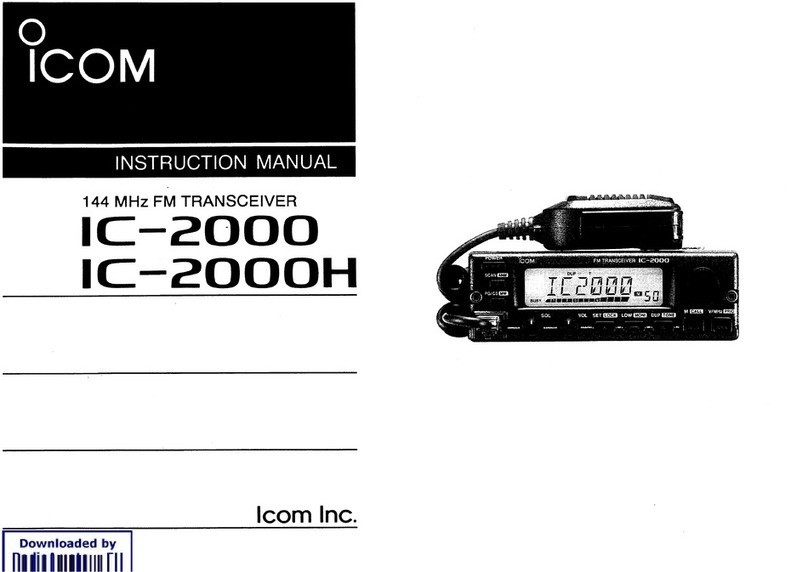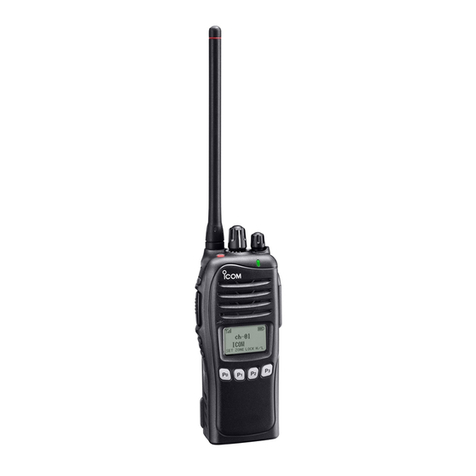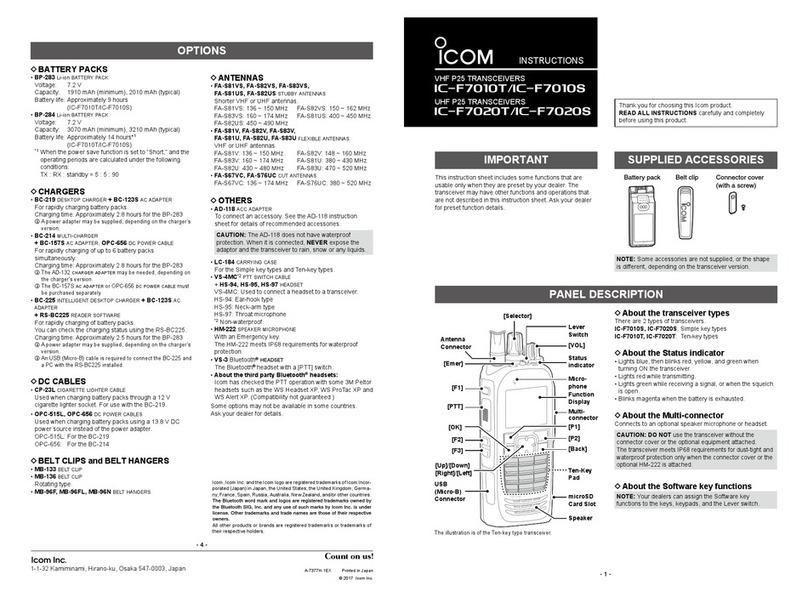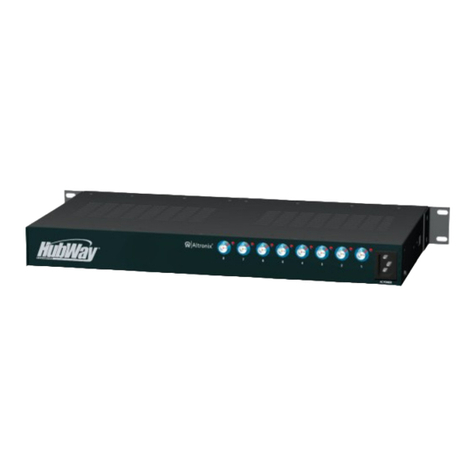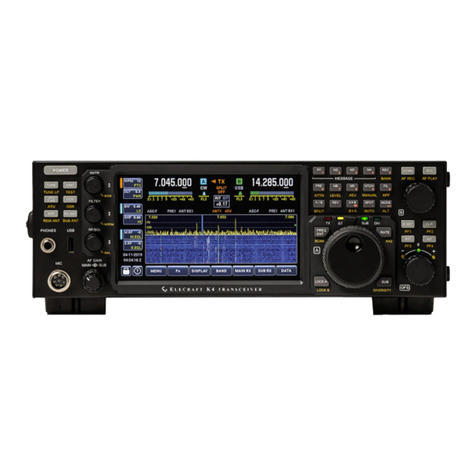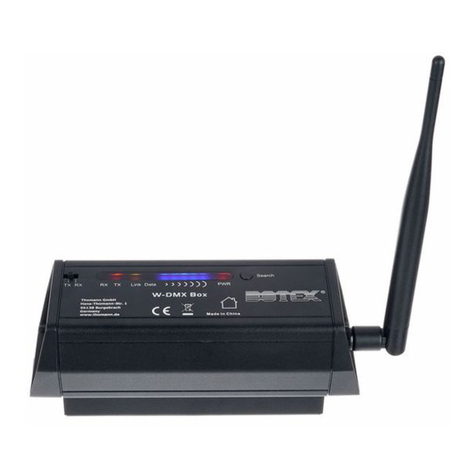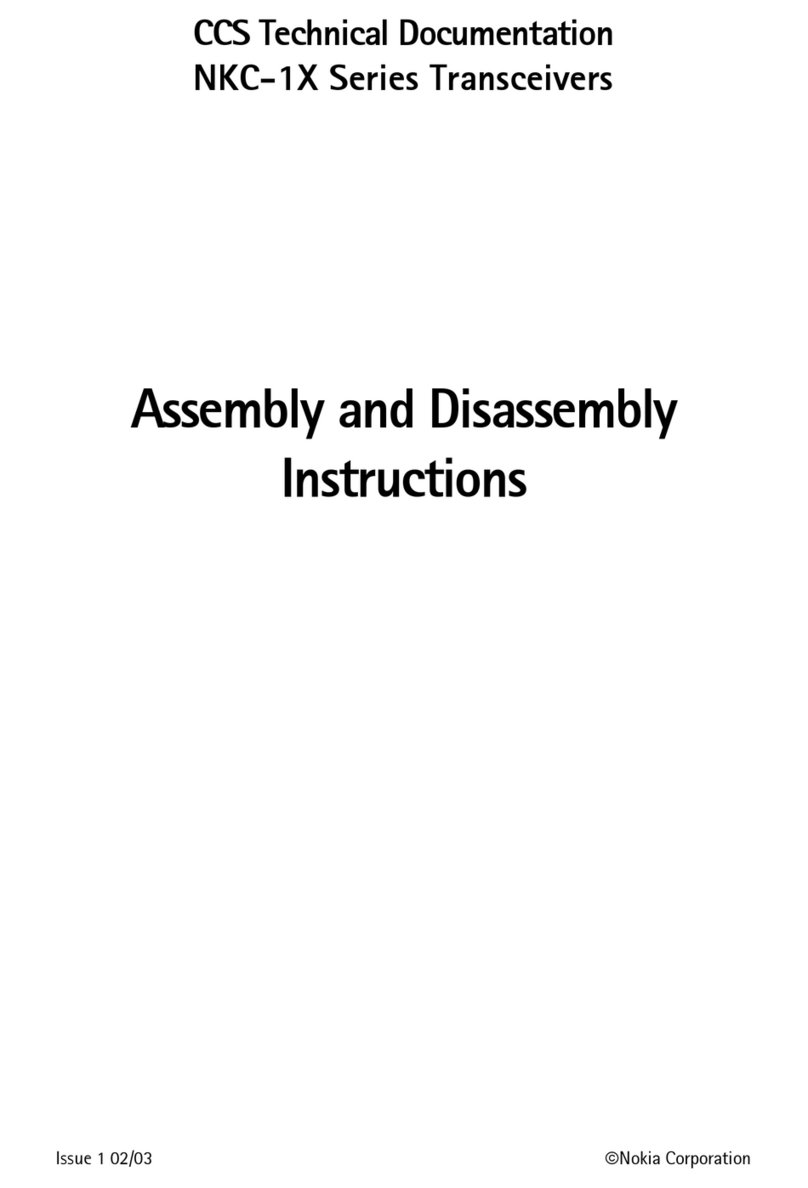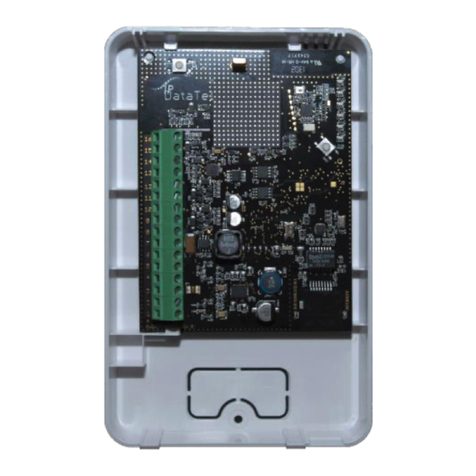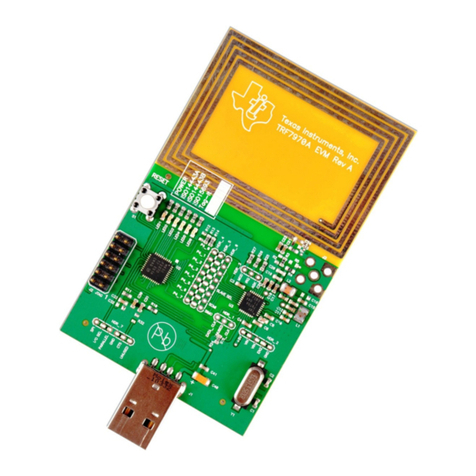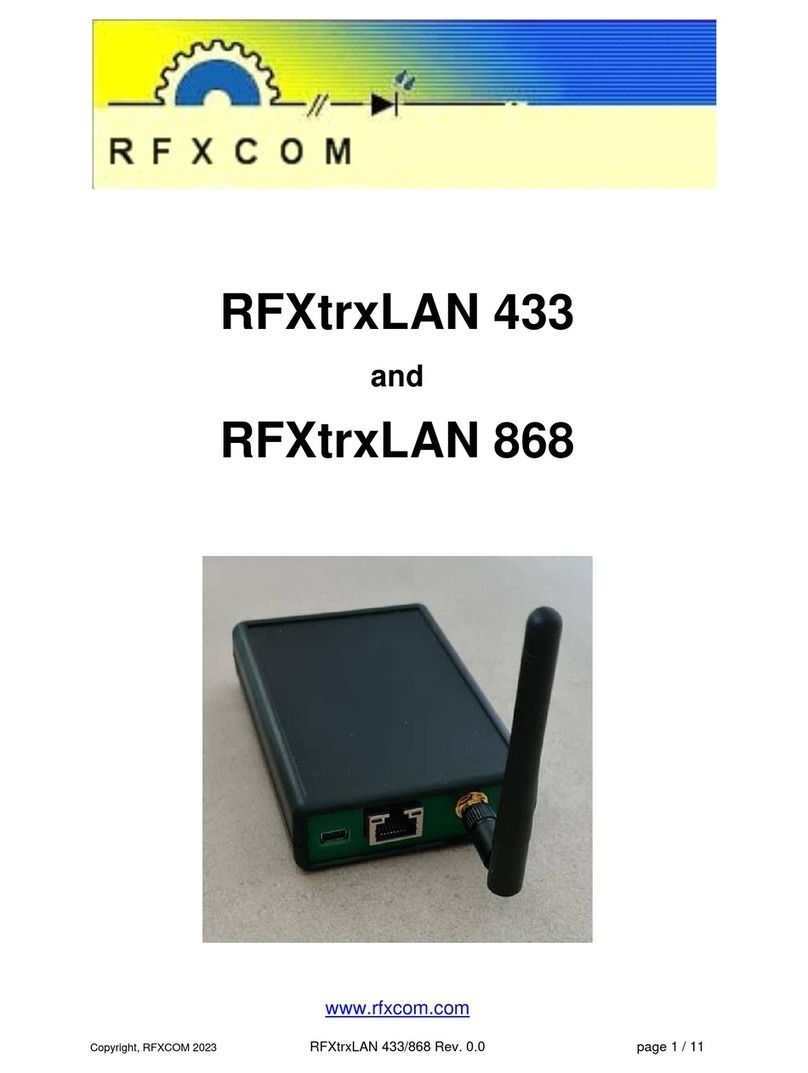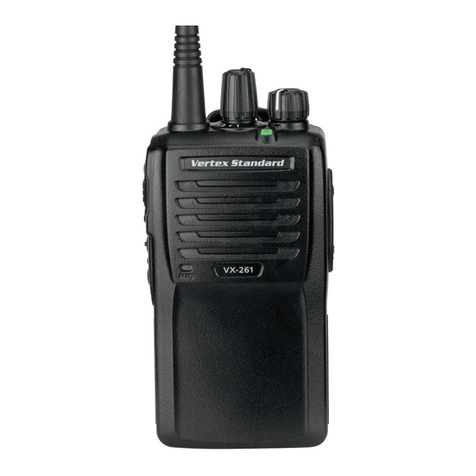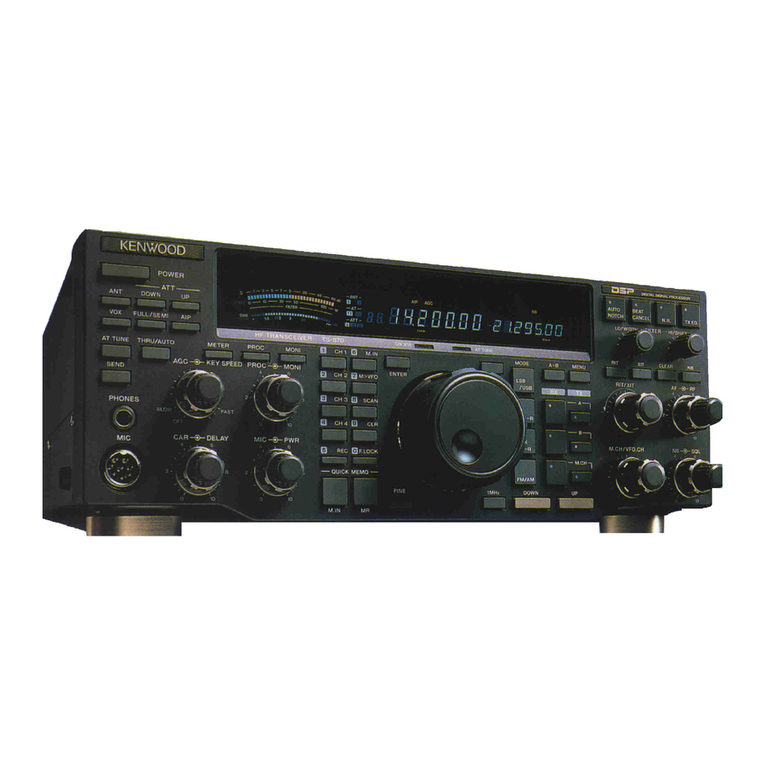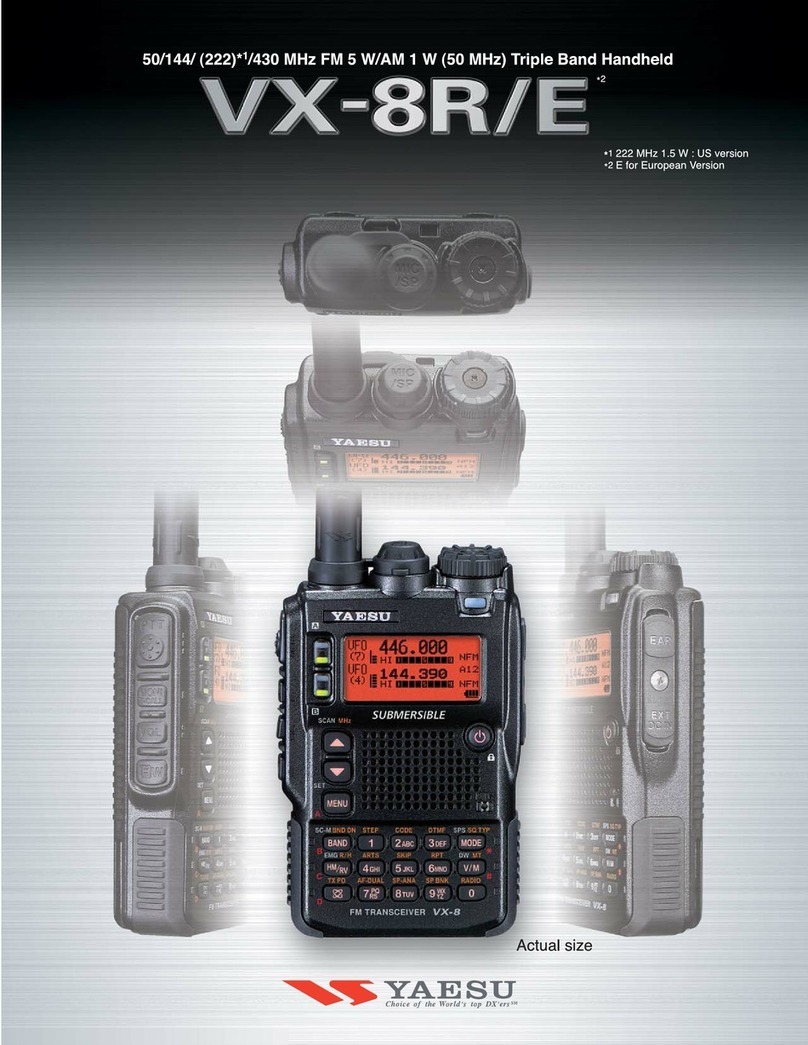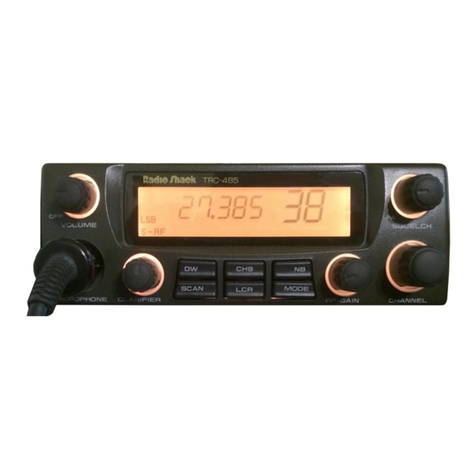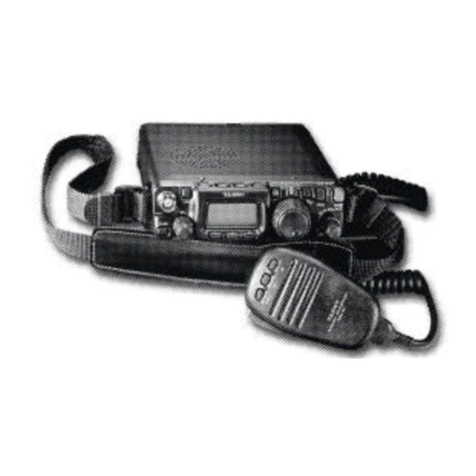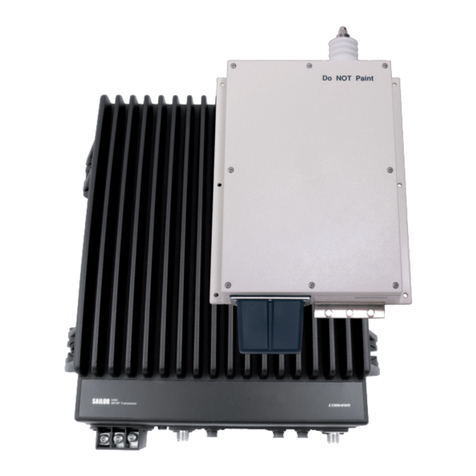Icom IC-M504A User manual

INSTRUCTION MANUAL
iM504A
VHF MARINE TRANSCEIVER

i
FOREWORD
Thank you for purchasing this Icom product. The IC-M504A
vhf marine transceiver is designed and built with Icom’s
state of the art technology and craftsmanship. With proper
care, this product should provide you with years of trouble-
free operation.
We appreciate you making the IC-M504A your radio of
choice, and hope you agree with Icom’s philosophy of “tech-
nology first.” Many hours of research and development went
into the design of your IC-M504A.
DFEATURES
❍Simple operation with large keys
❍Easy to hear speaker
❍Built-in DSC meets ITU Class D requirement
❍Rugged waterproof construction
❍
Optional COMMANDMICII™ (HM-157) and
COMMANDMICIII™ (HM-162) are available
❍Easy to make individual DSC calls using Icom's
MA-500TR Class B AIS Transponder
IMPORTANT
READ ALL INSTRUCTIONS carefully and completely
before using the transceiver.
SAVE THIS INSTRUCTION MANUAL — This in-
struction manual contains important operating instructions
for the IC-M504A.
EXPLICIT DEFINITIONS
WORD DEFINITION
RWARNING! Personal injury, fire hazard or electric
shock may occur.
CAUTION Equipment damage may occur.
NOTE
If disregarded, inconvenience only. No risk
of personal injury, fire or electric shock.
CLEAN THE TRANSCEIVER AND MICROPHONE
THOROUGHLY WITH FRESH WATER after exposure to
water including salt, otherwise, the keys and switch may
become inoperable due to salt crystallization.

IN CASE OF EMERGENCY
If your vessel requires assistance, contact other vessels and
the Coast Guard by sending a Distress call on Channel 16.
Or, transmit your Distress call using digital selective calling
on Channel 70.
NOTE
A WARNING STICKER is supplied with the transceiver.
To comply with FCC regulations, this sticker must be affixed
in such a location as to be readily seen from the operating
controls of the radio as in the diagram below. Make sure the
chosen location is clean and dry before applying the sticker.
EXAMPLE
WARNING
STICKER
USING CHANNEL 16
DISTRESS CALL PROCEDURE
1. “MAYDAY MAYDAY MAYDAY.”
2. “THIS IS ...............” (name of vessel).
3. Say your call sign or other description of the vessel (AND
9 digit DSC ID if you have one).
4. “LOCATED AT ...............” (your position).
5. State the nature of the distress and assistance required.
6. Give any other information which might facilitate the res-
cue.
USING DIGITAL SELECTIVE CALLING (Ch 70)
DISTRESS CALL PROCEDURE
1. While lifting up the key cover, hold down [DISTRESS]
for 5 seconds until you hear 5 short beeps and then one
long beep.
2. Wait for an acknowledgment on Channel 70 from a coast
station.
•Aftertheacknowledgementisreceived,Channel16isauto-
matically selected.
3. Hold down [PTT], then transmit the appropriate informa-
tion as listed above.
ii

iii
RADIO OPERATOR WARNING
WARNING
Icom requires the radio operator to meet the
FCC Requirements for Radio Frequency Expo-
sure. An omnidirectional antenna with gain not
greater than 9 dBi must be mounted a mini-
mum of 5 meters (measured from the lowest
point of the antenna) vertically above the main
deck and all possible personnel. This is the minimum safe
separation distance estimated to meet all RF exposure com-
pliance requirements. This 5 meter distance is based on the
FCC Safe Maximum Permissible Exposure (MPE) distance
of 3 meters added to the height of an adult (2 meters) and is
appropriate for all vessels.
For watercraft without suitable structures, the antenna must
be mounted so as to maintain a minimum of 1 meter verti-
cally between the antenna, (measured from the lowest point
of the antenna), to the heads of all persons AND all persons
must stay outside of the 3 meter MPE radius.
Do not transmit with radio and antenna when persons are
within the MPE radius of the antenna, unless such persons
(such as driver or radio operator) are shielded from antenna
field by a grounded metallic barrier. The MPE Radius is the
minimum distance from the antenna axis that person should
maintain in order to avoid RF exposure higher than the al-
lowable MPE level set by FCC.
FAILURE TO OBSERVE THESE LIMITS MAY ALLOW
THOSE WITHIN THE MPE RADIUS TO EXPERIENCE RF
RADIATION ABSORPTION WHICH EXCEEDS THE FCC
MAXIMUM PERMISSIBLE EXPOSURE (MPE) LIMIT.
IT IS THE RESPONSIBILITY OF THE RADIO OPERATOR
TO ENSURE THAT THE MAXIMUM PERMISSIBLE EXPO-
SURE LIMITS ARE OBSERVED AT ALL TIMES DURING
RADIO TRANSMISSION. THE RADIO OPERATOR IS TO
ENSURE THAT NO BYSTANDERS COME WITHIN THE
RADIUS OF THE MAXIMUM PERMISSIBLE EXPOSURE
LIMITS.
Determining MPE Radius
THE MAXIMUM PERMISSIBLE EXPOSURE (MPE) RA-
DIUS HAS BEEN ESTIMATED TO BE A RADIUS OF
ABOUT 3M PER OET BULLETIN 65 OF THE FCC.
THIS ESTIMATE IS MADE ASSUMING THE MAXIMUM
POWER OF THE RADIO AND ANTENNAS WITH A MAXI-
MUM GAIN OF 9dBi ARE USED FOR A SHIP MOUNTED
SYSTEM.

iv
TABLE OF CONTENTS 1
2
3
4
5
6
7
8
9
10
11
12
13
14
15
16
FOREWORD ..................................................................................... i
IMPORTANT...................................................................................... i
EXPLICIT DEFINITIONS................................................................... i
IN CASE OF EMERGENCY............................................................. ii
NOTE................................................................................................ ii
RADIO OPERATOR WARNING ...................................................... iii
TABLE OF CONTENTS................................................................... iv
PRECAUTIONS................................................................................ v
1 OPERATING RULES ..................................................................1
2 PANEL DESCRIPTION ...........................................................2–5
■ Front panel ...............................................................................2
■ Function display .......................................................................4
■ Speaker Microphone ................................................................ 5
3 BASIC OPERATION ............................................................. 6–11
■ Channel selection.....................................................................6
■ Receiving and transmitting.......................................................8
■ Call channel programming .......................................................9
■ Channel comments ..................................................................9
■ Microphone Lock function ......................................................10
■ Display backlight ....................................................................10
■ Optional voice scrambler operation........................................11
4 SCAN OPERATION ............................................................12–13
■ Scan types.............................................................................12
■ Setting TAG channels ............................................................13
■ Starting a scan.......................................................................13
5 DUALWATCH/TRI-WATCH .......................................................14
■ Description.............................................................................14
■ Operation...............................................................................14
6 DSC OPERATION...............................................................15–47
■ MMSI code programming ...................................................... 15
■ DSC address ID.....................................................................16
■ Position and time programming .............................................18
■ Position and time indication ...................................................19
■ GPS information display ........................................................19
■ Distress call ...........................................................................20
■ Transmitting DSC calls...........................................................23
■ Receiving DSC calls ..............................................................35
■ Received messages ..............................................................43
■ DSC Set up menu..................................................................44
7 OTHER FUNCTIONS .......................................................... 48–52
■ Intercom operation.................................................................48
■ RX Speaker function..............................................................49
■ Hailer operation .....................................................................50
■ Automatic Foghorn function...................................................51
8 SET MODE..........................................................................53–55
■ Set mode programming .........................................................53
■ Set mode items......................................................................53
9 CONNECTIONS AND MAINTENANCE..............................56–66
■ Connections...........................................................................56
■ Antenna .................................................................................58
■ Fuse replacement..................................................................58
■ Cleaning.................................................................................58
■ Supplied accessories.............................................................58
■ Mounting the transceiver .......................................................59
■ MB-75 installation ..................................................................60
■ UT-112/UT-98 installation.......................................................61
■ Microphone installation..........................................................62
10 TROUBLESHOOTING ..............................................................67
11 SPECIFICATIONS AND OPTIONS.....................................68–69
■ Specifications.........................................................................68
■ Options ..................................................................................69
12 CHANNEL LIST ........................................................................70
13 TEMPLATE ............................................................................... 71
14 FCC INFORMATION ................................................................. 73

v
PRECAUTIONS
RWARNING! NEVER
connect the transceiver to an AC
outlet. This may pose a fire hazard or result in an electric shock.
RWARNING! NEVER connect the transceiver to a
power source of more than 16 V DC or use reverse polarity.
This will ruin the transceiver.
RWARNING! NEVER cut the DC power cable between
the DC plug at the back of the transceiver and fuse holder. If
an incorrect connection is made after cutting, the transceiver
may be damaged.
CAUTION: NEVER
place the transceiver where normal
operation of the vessel may be hindered or where it could
cause bodily injury.
CAUTION: Changes or modifications to this device, not
expressly approved by Icom Inc., could void your authority to
operate this device under FCC regulations.
KEEP the transceiver and microphone at least 1 m (3.3 ft)
away from the vessel’s magnetic navigation compass.
DO NOT use or place the transceiver in areas with tem-
peratures below –20°C (–4°F) or above +60°C (+140°F) or, in
areas subject to direct sunlight, such as the dashboard.
DO NOT use harsh solvents such as benzine or alcohol to
clean the transceiver, as they will damage the transceiver’s
surfaces. If the transceiver becomes dusty or dirty, wipe it
clean with a soft, dry cloth.
BE CAREFUL! The transceiver rear panel will become
hot when operating continuously for long periods of time.
Place the transceiver in a secure place to avoid inadvertent
use by children.
BE CAREFUL! The transceiver and the optional HM-
157 commandmicii™/HM-162 commandmiciii™meet IPX8
requirements for waterproof protection. However, once the
transceiver has been dropped, waterproof protection cannot
be guaranteed because of possible damage to the transceiv-
er’s case or the waterproof seal.
Icom, Icom Inc. and the Icom logo are registered trademarks of Icom Incor-
porated (Japan) in Japan, the United States, the United Kingdom, Germany,
France, Spain, Russia and/or other countries.
COMMANDMIC is a registered trademark of Icom Incorporated (Japan) in
Japan and the United States.

1
1
OPERATING RULES
D Priorities
•Readallrulesandregulationspertainingtocallpriorities,
and keep an up-to-date copy handy. Safety and distress
calls take priority over all others.
•YoumustmonitorChannel16whenyouarenotoperating
on another channel.
•Falseorfraudulentdistresscallsareprohibitedunderlaw.
D Privacy
•Informationoverheard,butnotintendedforyou,cannotlaw-
fully be used in any way.
•Indecentorprofanelanguageisprohibited.
D Radio licenses
(1) SHIP STATION LICENSE
You may require a current radio station license before using
the transceiver. It is unlawful to operate a ship station which is
not licensed, but required to be.
If required, contact your dealer or the appropriate govern-
ment agency for a Ship-Radiotelephone license application.
This government-issued license states the call sign which is
your craft’s identification for radio purposes.
(2) OPERATOR’S LICENSE
A Restricted Radiotelephone Operator Permit is the license
most often held by small vessel radio operators when a radio
is not required for safety purposes.
If required, the Restricted Radiotelephone Operator Permit
must be posted or kept with the operator. If required, only a
licensed radio operator may operate a transceiver.
However, non-licensed individuals may talk over a transceiver
if a licensed operator starts, supervises, ends the call and
makes the necessary log entries.
A current copy of the applicable government rules and regu-
lations is only required to be on hand for vessels in which
a radio telephone is compulsory. However, even if you are
not required to have these on hand it is your responsibility to
be thoroughly acquainted with all pertinent rules and regula-
tions.
NOTE: Even though the IC-M504A is capable of operation
on VHF marine channels 3, 21, 23, 61, 64, 81, 82 and
83, according to FCC regulations these simplex channels
cannot be lawfully used by the general population in USA
waters.
1
2
3
4
5
6
7
8
9
10
11
12
13
14
15
16

2
PANEL DESCRIPTION
2
■Front panel
Function display (p. 4)Speaker
q
e
r
t
y
w
uio!0!1
!2
!3
The microphone may be connected here, or the
microphone and its connection kit for the rear
panel are separately included, depending on the
transceiver version.
• See pages 58 and 62 for details.
qDISTRESS KEY [DISTRESS] (pp. 20, 22)
Hold down for 5 seconds to transmit a Distress call.
wDSC MENU KEY [MENU]
Push to toggle the DSC menu appear or disappear. (p. 15)
eCLEAR KEY [CLR]
(pp. 9, 55)
Push to cancel the entered function, exit Set mode.
r HAIL/RX SPEAKER KEY [HAIL•RX ]
➥Push to turn the hailer mode ON or OFF. (p. 50)
➥Hold down for 1 second to turn the RX Speaker mode
ON or OFF. (p. 49)
➥While holding down [H/L], push to turn the Automatic
Foghorn function ON. (p. 51)
t ATTENUATOR/INTERCOM KEY [LO/DX•IC•SCRM]
➥Push to turn the Attenuator function ON or OFF. (p. 8)
•“LOC” appears when the Attenuator function is turned ON.
➥Hold down for 1 second to activate an optional Inter-
com function. (p. 48)
➥Hold down to call the optional Command microphone
while in Intercom mode. (p. 48)
➥While holding down [H/L], push to turn the Voice
Scrambler function ON or OFF. (p. 11)
y CHANNEL 16/CALL CHANNEL KEY [16•9]
➥Push to select Channel 16. (p. 6)
➥
Hold down for 1 second to select Call channel. (p. 6)
•“CALL” appears when Call channel is selected.
➥
Hold down for 3 seconds to enter Call channel program-
ming mode when Call channel is selected. (p. 9)
➥While holding down [H/L], push to enter the channel
comment programming mode. (p. 9)
➥Push to move the cursor forward while in the channel
comment programming mode. (p. 9)
➥While turning power ON, push to enter Set mode.
(p. 53)

3
2
PANEL DESCRIPTION
u CHANNEL SELECTOR [DIAL•ENTER]
➥Rotate to select the operating channels, Set mode set-
tings, etc. (pp. 6–8, 53)
➥While holding down [H/L], rotate to adjust the bright-
ness of the LCD and key backlight. (p. 10)
➥Push to enter the input channel comment, selected
item, etc. (pp. 9, 53)
➥Rotate to check TAG channels, changes scanning di-
rection or resumes the scan manually during scan.
(p. 13)
➥While holding down [HAIL•RX ], rotate to adjust the
audio level in RX Speaker mode. (p. 49)
➥Hold down for 1 second to display the GPS information
when a GPS receiver is connected. (p. 19)
iCHANNEL/WEATHER CHANNEL KEY
[CH/WX•DUAL•U/I/C]
➥Selects and toggles the regular channel and Weather
channel when pushed momentarily. (p. 7)
➥Hold down for 1 second to start Dualwatch or Tri-watch.
(p. 14)
➥Push to stop Dualwatch or Tri-watch when either is ac-
tivated. (p. 14)
➥Push to move the cursor backward while in the channel
comment programming mode. (p. 9)
➥While holding down [H/L], push to select one of three
channel groups in sequence. (p. 7)
•U.S.A.,InternationalandCanadianchannelsareavailable.
oSQUELCH CONTROL [SQL]
Rotate to set the squelch threshold level. (p. 8)
!0 SCAN/TAG KEY [SCAN•TAG] (p. 13)
➥Push to start and stop Normal or Priority scan.
➥Hold down for 1 second to set or clear the displayed
channel as a TAG (scanned) channel.
➥While holding down [H/L], hold down for 3 seconds to
clear or set all TAG channels in the selected channel
group.
!1 VOLUME CONTROL [VOL] (p. 8)
Rotate to adjust the audio level.
!2 TRANSMIT POWER KEY [H/L]
➥Push to toggle the power high or low. (p. 8)
•Somechannelsaresettolowpoweronly.
➥While pushing this key, some keys perform secondary
functions.
!3 POWER KEY [POWER] (p. 8)
➥Push to turn power ON.
➥Hold down for 1 second to turn power OFF.
1
2
3
4
5
6
7
8
9
10
11
12
13
14
15
16

1-1-32 Kamiminami, Hirano-ku, Osaka 547-0003, Japan
A-6932D-1US
Printed in Japan
©2011 Icom Inc.
Printed on recycled paper with soy ink.
Other manuals for IC-M504A
2
Other Icom Transceiver manuals

Icom
Icom IC-M801GMDSS User manual
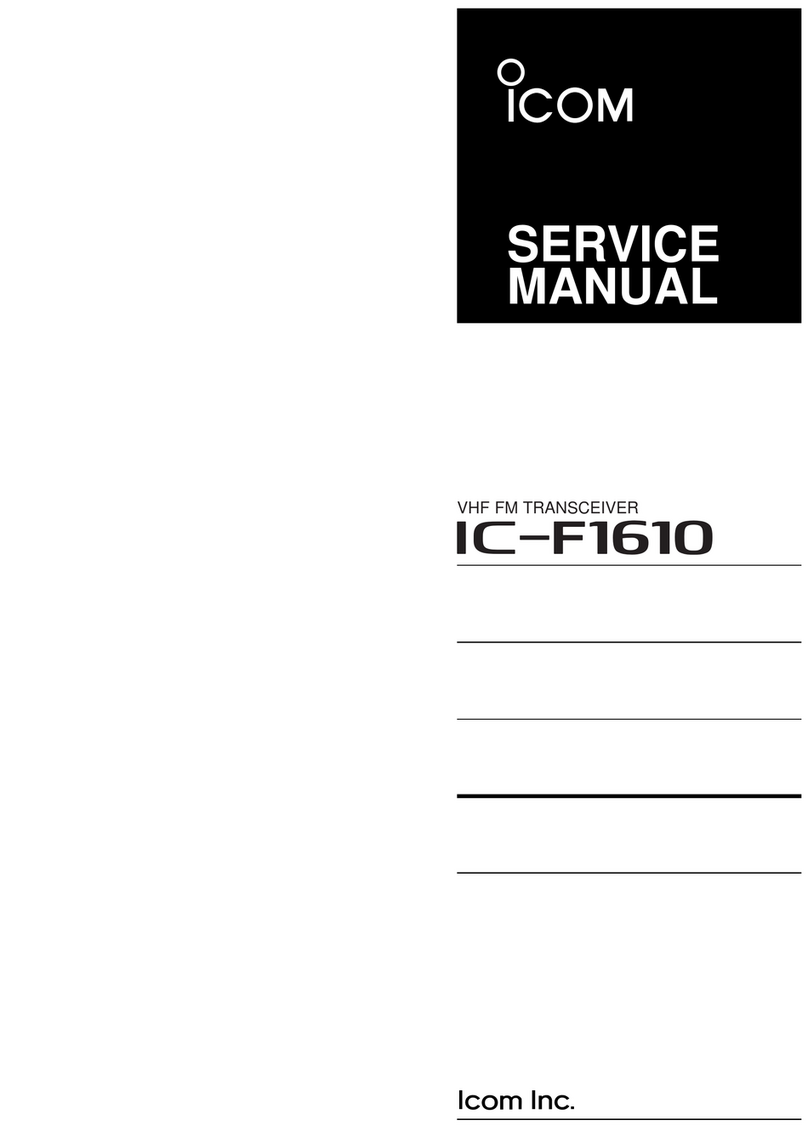
Icom
Icom IC-F1610 User manual
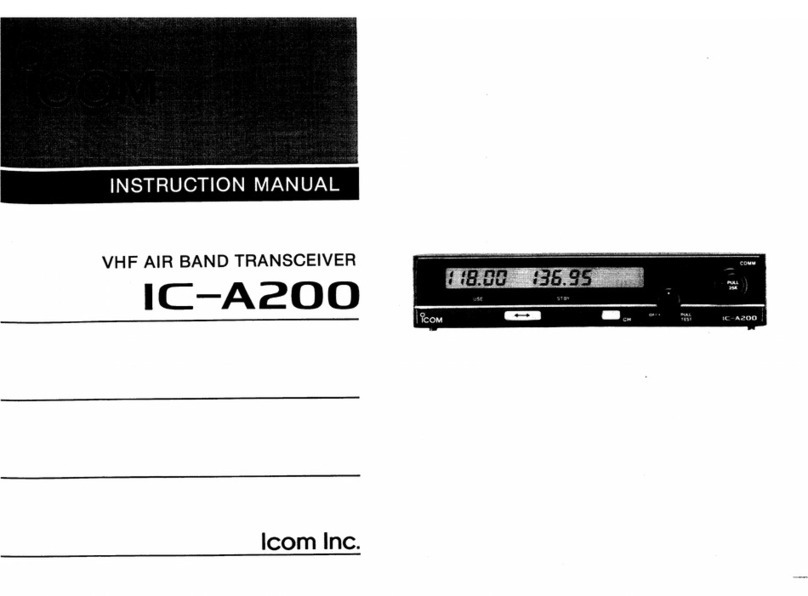
Icom
Icom IC-A200 User manual
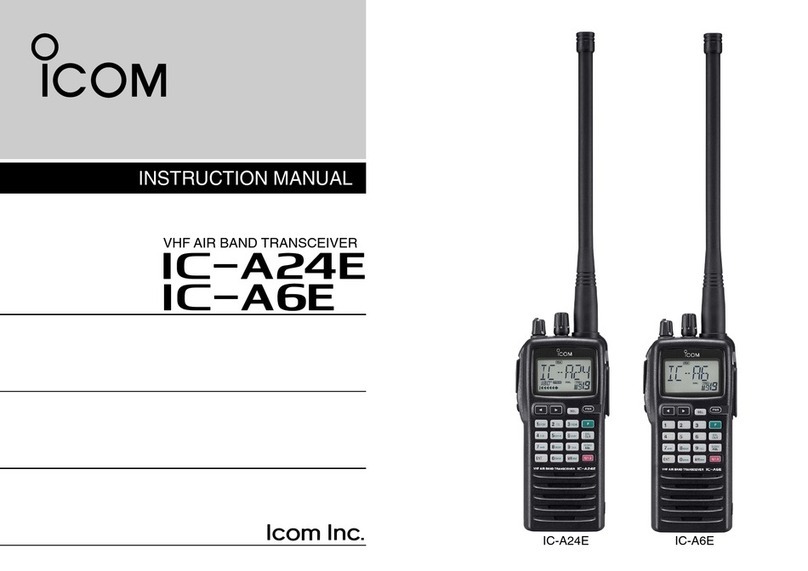
Icom
Icom IC-A24E User manual
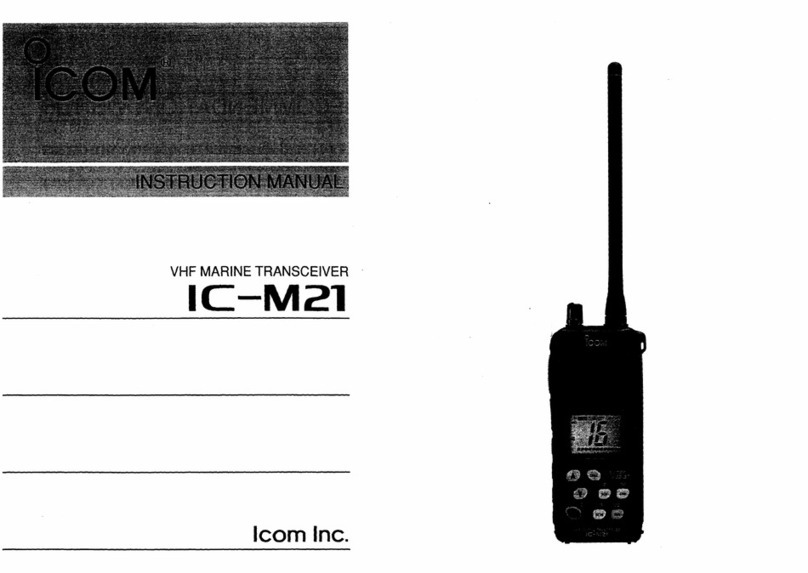
Icom
Icom IC-M21 User manual
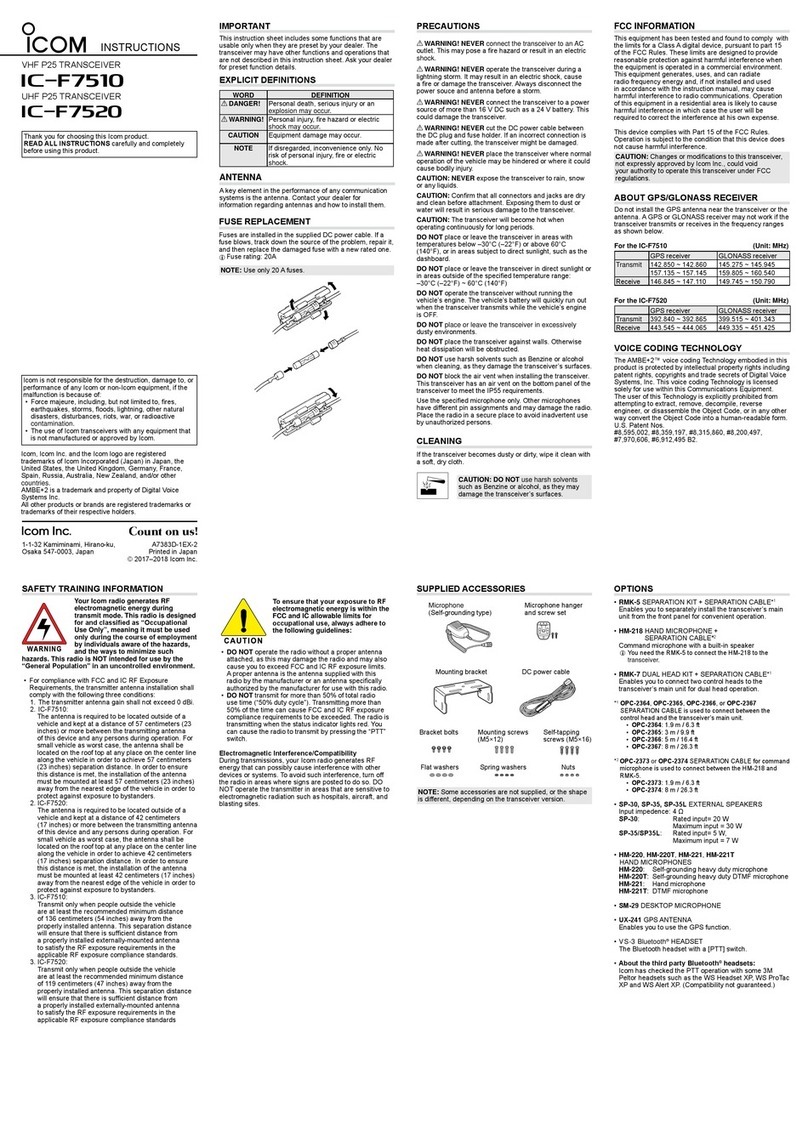
Icom
Icom IC-F7510 Series User manual
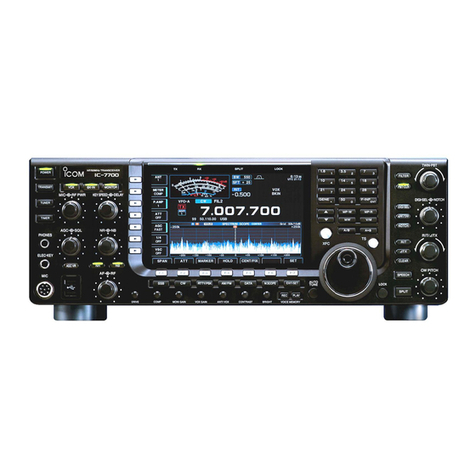
Icom
Icom IC-7700 User manual

Icom
Icom IC-706 User manual
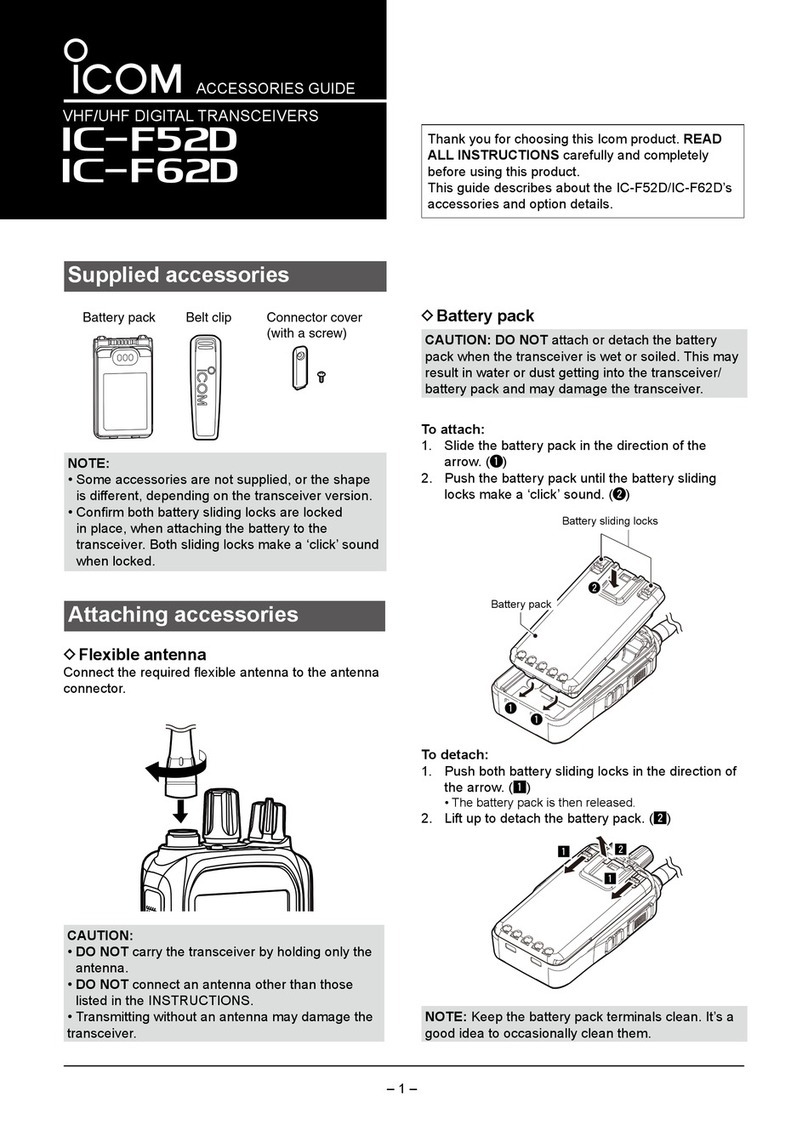
Icom
Icom IC-F52D User manual
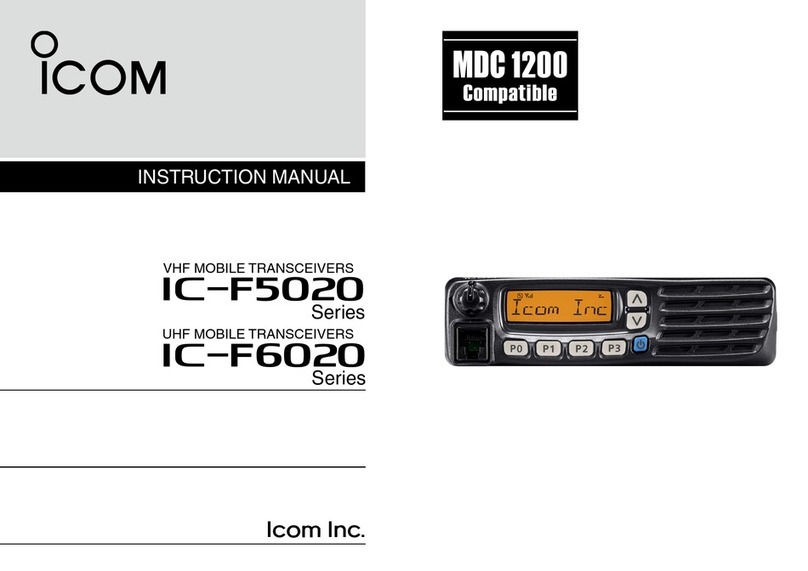
Icom
Icom IC-F5020 Series User manual
